Thermal Insulation: Choosing Healthy and Low-Carbon Materials
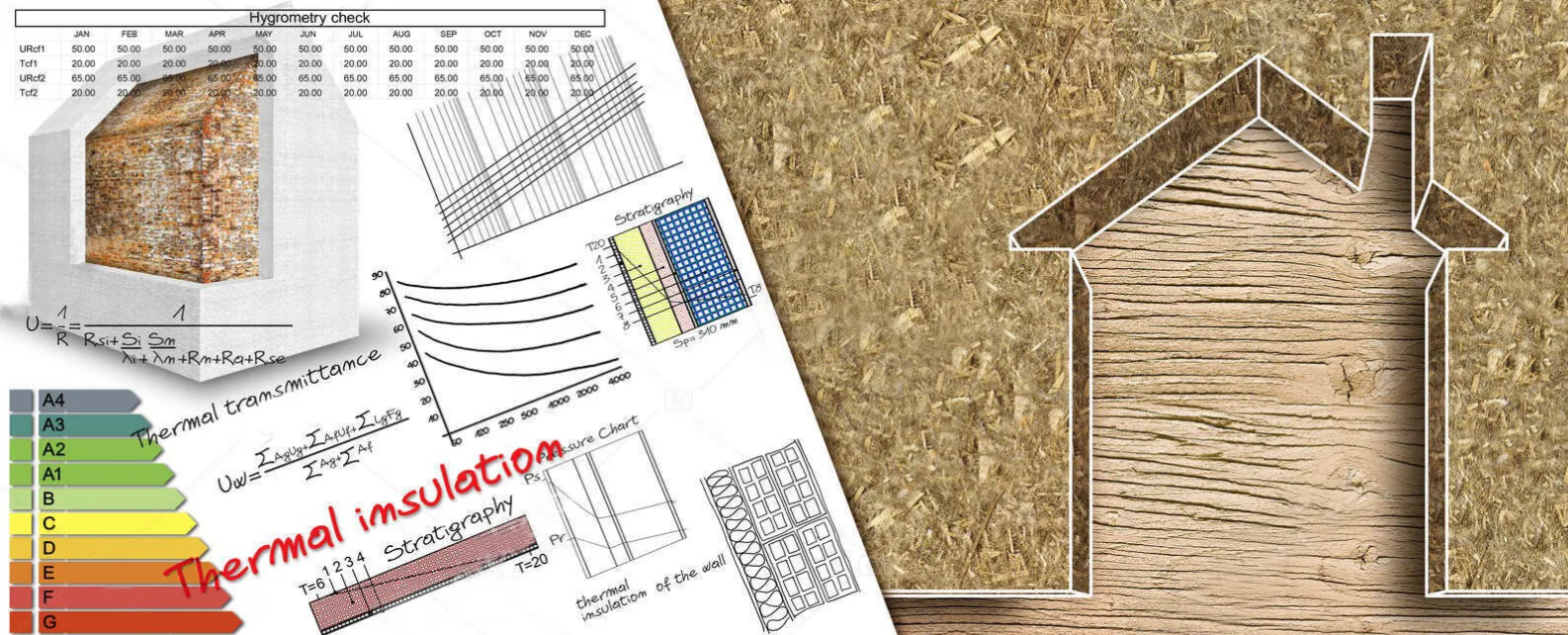
Source: Depositphotos
Design strategies for low-carbon buildings and energy retrofits mainly act on envelope systems and energy installations to optimise building energy performance jointly with renewable energy systems. Therefore, low-carbon design strategies, installations and building materials like insulations are crucial to minimising operational and energy consumption due to Embodied Energy (EE) and Global Warming Potential (GWP).
Your decisions as an architect or construction professional are essential to minimise environmental impacts, for instance, through insulation choices in foundations, walls, roofs and floors. Based on the analysis of total emissions from 503 homes in Canada, the report “Emissions of Materials Benchmark Assessment for Residential Construction” by Builders for Climate Action & Passive Building in Canada highlights:
 73% of all carbon emission in the study comes from just three material categories: concrete (33% for foundation walls, slabs and footings), insulation (26.1% for foundations, walls and roofs) and exterior cladding (13.4%). Hence, efforts to reduce material carbon emissions should be concentrated in these material categories.
73% of all carbon emission in the study comes from just three material categories: concrete (33% for foundation walls, slabs and footings), insulation (26.1% for foundations, walls and roofs) and exterior cladding (13.4%). Hence, efforts to reduce material carbon emissions should be concentrated in these material categories.
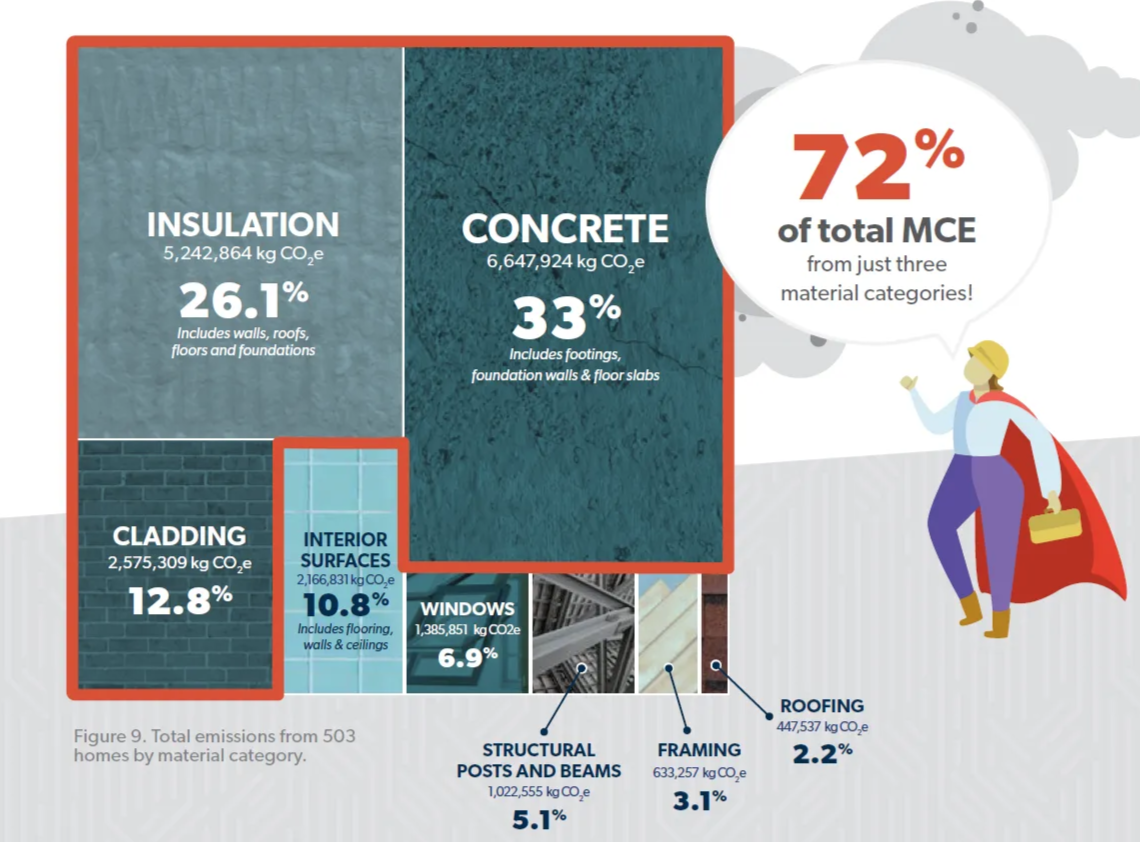
Figure 1. Comparative analysis of emissions by building material and application. MCE (Material Carbon Emissions). Source: Builders for Climate Action & Passive Building in Canada.
In this article, we explore the determinant role of thermal insulations through a multiperspective discussion around their carbon and thermal performance as well as health effects.
1. Illustrated Guide to Insulation Materials
The “Illustrated Guide to Insulation Materials” is part of the research that 2050 Materials is carrying out to help designers make more climate-conscious decisions. It has been made possible in part thanks to data and advice from GHA Glenn Howells Architects. This infographic finds the most conventional thermal insulation materials ordered according to their Global Warming Potential (GWP), more commonly known as “carbon footprint.”
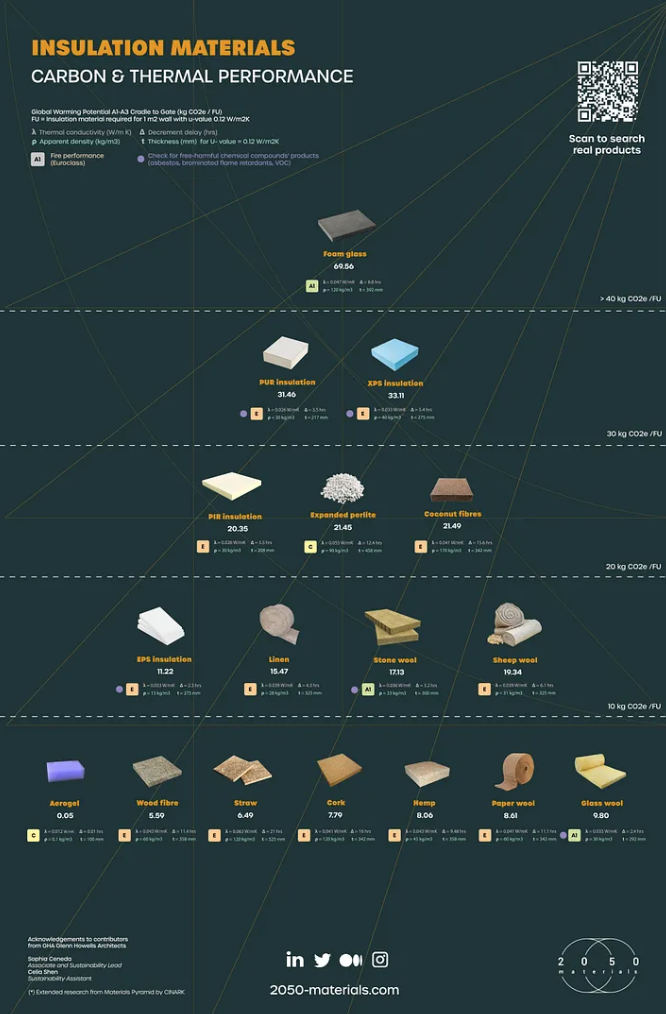
Figure 2. “Illustrated Guide to Insulation Materials” by 2050 Materials. Extended research from CINARK. Download a high resolution version from 2050-materials.com
Analysing the GWP and other environmental indicators through the whole Life Cycle Assessment (LCA) of building materials helps us understand the consumption of resources, energy, and water involved in the manufacturing process, thus its environmental impact and contribution to Global Warming. Based on around 2200 EPDs (Environmental Products Declarations) compiled in our extensive database and free-use platform, we have studied the carbon performance of 17 thermal insulation types of different resource origins (inorganic mineral, organic fossil fuels, organic plants and animal-derived or deriving from innovative engineered processes).
For this work, we consider the life-cycle stages A1-A3 (i.e. cradle to gate or manufacturing emissions), and we exclude biogenic carbon. The end-of-life emissions for certain materials can have significant impacts. However, due to the high level of uncertainty about what may happen to a material at the end of its lifetime, as well as a scarcity of data for the end-of-life stages, we have decided to omit those in this poster.
 Remember that in a real construction project, it’s essential to take into account the whole life-cycle of the specific materials involved (i.e. their end life — landfill disposal, incineration, recycling potential), as well as the whole LCA of your building (A1-A3 Product, A4-A5 Construction, B1-B7 Use, C1-C4 End of life). This way, you will see the whole picture of the carbon performance (embodied carbon — construction, decommissioning, operational, reuse) and opportunities to implement 9R Circular economy strategies.
Remember that in a real construction project, it’s essential to take into account the whole life-cycle of the specific materials involved (i.e. their end life — landfill disposal, incineration, recycling potential), as well as the whole LCA of your building (A1-A3 Product, A4-A5 Construction, B1-B7 Use, C1-C4 End of life). This way, you will see the whole picture of the carbon performance (embodied carbon — construction, decommissioning, operational, reuse) and opportunities to implement 9R Circular economy strategies.
Another key point of the study is the uniform functional unit (FU) chosen for the GWP: insulation material required for a 1m2 wall with a U-value of 0.12 W/m2K. The thermal transmittance (U-value), which derives from the thermal conductivity (k or λ), represents the heat transfer rate through a structure (which can be a single material or a composite), divided by the difference in temperature across that structure. A lower U-value indicates a structure that conducts less heat. Depending on each material’s apparent density and thermal properties, you would need different thicknesses of insulation materials for the same U-value. So, this is translated into different quantities that vary on the type of insulation material with a subsequent different environmental impact.
2. Carbon performance
According to an EU report about the competitive landscape of the EU’s insulation materials industry, the European market of building insulation materials is dominated by mineral and fossil fuel-derived insulation materials that offer the best performance in terms of unit cost.
 Glass (36%) and stone wool (22%) represent 58% of the market in Europe, followed by EPS (27%), PUR/PIR (8%) and XPS (6%). However, these insulation materials could have negative environmental impacts in the building’s decommissioning or due to a high level of embodied energy in the production phase.
Glass (36%) and stone wool (22%) represent 58% of the market in Europe, followed by EPS (27%), PUR/PIR (8%) and XPS (6%). However, these insulation materials could have negative environmental impacts in the building’s decommissioning or due to a high level of embodied energy in the production phase.
Driven by governmental measures to reduce greenhouse gas emissions, cost efficiency improvements and adoption of regulations on energy-efficient buildings, the global demand for thermal insulation materials in building applications is projected to increase at a CAGR of 4.5 % between 2016 and 2027.
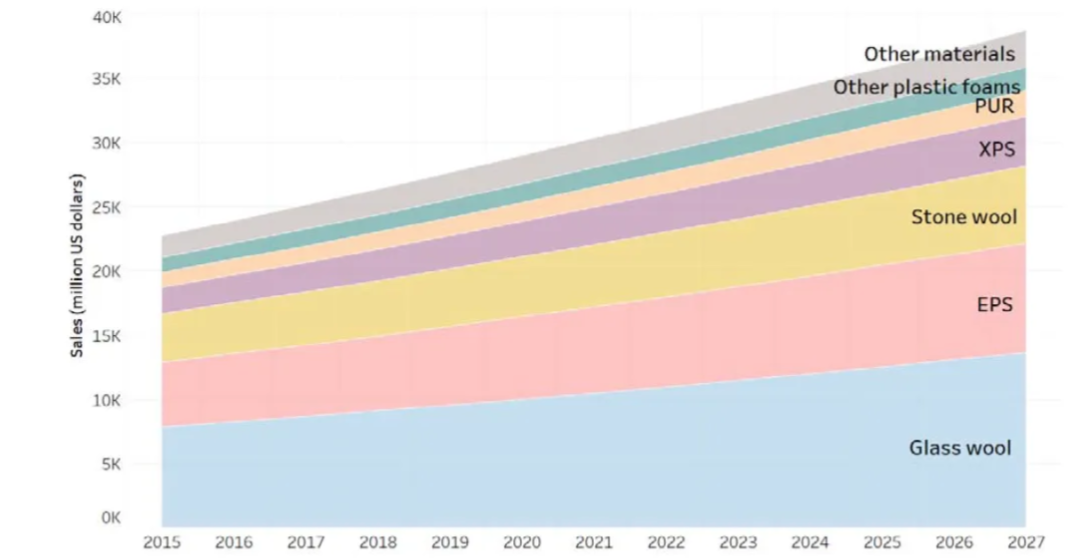
Research papers highlight the potential of animal and vegetal-based materials and plastic derived from recycled sources as thermal insulation to avoid the pollution of soil and water with low biodegradable matters and the air with greenhouses gases such as CO2 or methane from the disposal by burning or by natural decay (F. Asdrubali, et al, 2015).
Throughout the “Illustrated Guide to Insulation Materials”, you can compare the low carbon performance under 10 kg CO2e/FU of natural materials (wood fibre, straw, cork, hemp, paper wool) with the high carbon performance of organic fossil fuel-derived and inorganic mineral-derived (PUR, XPS, foam glass) with a GWP over 30 kg CO2e/FU.
3. Thermal performance
The insulation materials are used in four major parts of a building that are subject to heat losses: foundations, internal and external walls, floors, and roofs. The selection of an insulation material depends on weather conditions and the level of insulation required to meet hygrothermal comfort and building regulations. Wall insulation is the largest application in the building thermal insulation market (by value) with about 47%, followed by roof (37%) and floor (15%) (Visiongain, 2017).
 One of the present downsides of building high-energy efficiency buildings resides in the vast amount of thermo-insulating materials used for the building envelope to achieve the required high thermal resistance.
One of the present downsides of building high-energy efficiency buildings resides in the vast amount of thermo-insulating materials used for the building envelope to achieve the required high thermal resistance.
In addition to better-designed materials and construction methods, thick layers of insulation, usually between 10–30 cm thick depending on the relevant legislation, construction element, designer, and stakeholder determinations, are common in all new buildings and the majority of renovation (G. Grazieski, et al, 2021).
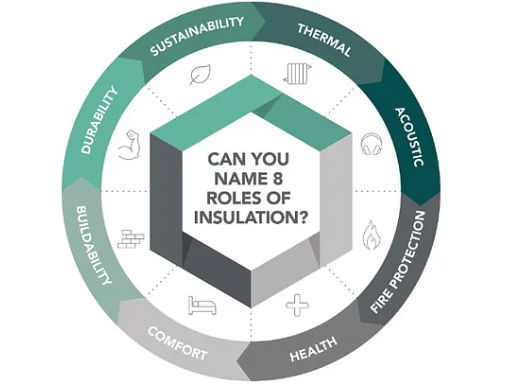
Figure 4. Roles of insulation materials. Source: Building Specifier.
 Apart from environmental indicators for generic materials, you also need to consider in your insulation materials’ selection the thermal performance (thermal conductivity, decrement delay, etc.) and other physical properties (apparent density, water vapour permeability, water absorption, chemical hazards, fire performance, etc.) to avoid, among other things, building pathology.
Apart from environmental indicators for generic materials, you also need to consider in your insulation materials’ selection the thermal performance (thermal conductivity, decrement delay, etc.) and other physical properties (apparent density, water vapour permeability, water absorption, chemical hazards, fire performance, etc.) to avoid, among other things, building pathology.
In this insulation materials research, we have counted on the expertise of GHA Glenn Howells Architects to understand and calculate less broadly known thermal parameters like the decrement delay, which plays an important role in the global thermal performance of wall and roof systems. Don’t miss our next article focusing on this topic in collaboration with Sophia Ceneda (GHA Associate and Sustainability Lead) and Celia Shen (GHA Sustainability Assistant).
4. Healthy and safe insulation materials
Something we have learned from the pandemic times is the importance of living in flexible, comfortable, and healthy indoor spaces. However, there’s still a lack of awareness around the health dimension in design, construction and materials, even in architectural schools. We probably still forget the planet because, firstly, we forgot people; therefore, the impact of our design decisions on their health.
It is well-known that specific building materials like some paints, coatings, and adhesives are believed to have negative health effects (respiratory, neurological, immunological, gastrointestinal, etc.) mainly when permanent exposure to the indoor environment. But what about the hazardous chemicals in thermal insulations?
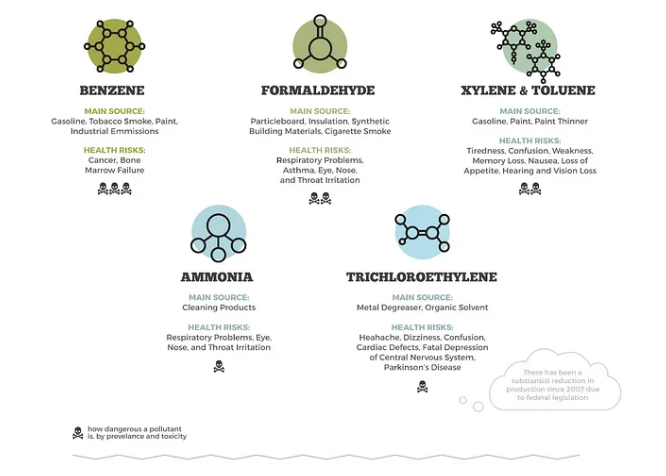
 Exposure to some insulation products can cause certain health effects. Luckily, most types of insulation are only dangerous if the product is mishandled, misapplied, damaged or if the wrong product is used in certain environments. Hence, the quality and knowledge level of the installer and manufacturer’s instructions is crucial to avoid insulation health hazards.
Exposure to some insulation products can cause certain health effects. Luckily, most types of insulation are only dangerous if the product is mishandled, misapplied, damaged or if the wrong product is used in certain environments. Hence, the quality and knowledge level of the installer and manufacturer’s instructions is crucial to avoid insulation health hazards.
By following these recommendations by the US Environmental Protection Agency (EPA) and building certification bodies, you can make better choices in thermal insulations:
- Always hire an experienced installer and request manufacturers for installation advice and Material Safety Data Sheet (MSDS).
- Count on experts and safety planning in case of demolition or repair.
- Choose a safer type of insulation to avoid harmful chemical compounds. Asbestos, flame retardants (brominated — HBCD, TBBPA; flame retardants penta-, okta- og deka-BDE is prohibited), VOC (Volatile Organic Compounds — formaldehyde, benzene), additives.
- Keep an eye out for certain types of thermal insulations that might have harmful toxins. XPS (extruded polystyrene), EPS (expanded polystyrene), SPF (Spray Polyurethane Foam), fine mineral fibres (glasswool, rockwool, slagwool, glass filaments, and refractory ceramic fibres), cellular rubber, and insulations which might be contaminated with asbestos (vermiculite).
- Be aware of related health outcomes. Respiratory and skin effects, carcinogenic (asbestos, some fire retardants), and sick building syndrome.
- Avoid exposure, especially when installing or suspicion of damage or deterioration. You can become exposed to insulation in two main ways: a) by breathing chemical ingredients in the air; b) by breathing or skin contact with insulation dust.
- Be aware of how dampness and temperature extremes affect certain thermal insulations.
- Test for harmful chemicals, especially if there is suspicion of asbestos or damaged insulations.
If you feel you need more special guidance on the harmfulness of building materials, have a look at environmental toxins lists from building certifications like Living Building Challenge (“LBC Red list”) or BREEAM Norway (“Checklist A20”).
5. Take action with 2050 Materials
If you are working on specifying thermal insulation materials, count on 2050 Materials support and educational contents. We will help you compile a suitable list of products and suppliers that best fit your project’s requirements. Our free-to-use 2050 Materials library offers a wide range of innovative, low-impact, and healthy materials in the market worldwide.
Get your high-quality printable “Illustrated Guide to Insulation Materials” designed by the 2050 Materials team for architects and designers aiming to navigate the sustainable building landscape.

Figure 6. Do your own research on thermal insulation materials, here
If you are a manufacturer, join 2050 Materials to share your products on our platform to help designers make better choices in their climate-conscious projects. Reach out to manufacturers@2050-materials.com to book a demo, or simply visit our website to get started.
Dig deeper into the topic and explore further through this quick and interesting read.
Sources
Blagoeva, D., Pavel, C.C., 2018. Competitive landscape of the EU’s insulation materials industry for energy-efficient buildings. EUR 28816 EN, Publications Office of the European Union, Luxembourg, ISBN 978–92–79–96383–4. Available from DOI https://doi.org/10.2760/7 [accessed Dec 29 2022].
F. Asdrubali et al., 2021. Embodied Energy and Carbon of building insulating materials: A critical review. Available from DOI 10.1016/j.cesys.2021.100032 [accessed Dec 29 2022].
V Vasile et al, 2019. Innovative Thermal Insulation Products for a Circular Economy. IOP Conf. Ser.: Earth Environ. Sci. 290 012037. Available from DOI 10.1088/1755–1315/290/1/012037 [accessed Dec 29 2022].
D. Kumar, et al, 2020. Comparative analysis of building insulation material properties and performance. Renewable and Sustainable Energy Reviews 131:110038. Available from: https://doi.org/10.1016/j.rser.2020.110038 [accessed Dec 29 2022].
Magwood, C., et al., 2022. Emissions of Materials Benchmark Assessment for Residential Construction Report. Builders for Climate Action & Passive Building in Canada. Available from: https://www.buildersforclimateaction.org/report—embarc-report.html [accessed Dec 29 2022].
The Construction Material Pyramid interactive tool. CINARK — Centre for Industrialised Architecture, The Royal Danish Academy — Architecture, Design, Conservation. Available from: https://www.materialepyramiden.dk/ [accessed Dec 29 2022].
For more information on health related impacts of insulation materials, please check these links:
Key Facts About Mesothelioma Causes – The Mesothelioma Center
Guide to Asbestos in the Home – The Mesothelioma Center
Related articles

Climate-Resilient Materials for the Built Environment: A Data-Centred Prime
As climate volatility intensifies, resilience metrics are fast becoming as critical as carbon data in material selection. This article outlines why adaptation is now a design imperative, how materials can be evaluated through a systems lens, and what KPIs project teams should demand. From self-healing concrete to fire-rated façades, we present a structured taxonomy of resilient materials, explain how to embed this intelligence into digital design workflows, and propose next steps for specification, benchmarking, and procurement.
Read more
The Most Interesting Low Carbon Products in Office Design
In this article and collection, we highlight 11 outstanding products that contribute to a lower carbon footprint in office design.
Read more
Top Low Carbon Building Boards: Performance, Benefits, and Use Cases
The building boards highlighted in this article and collection showcase low-carbon innovation in modern construction.
Read more